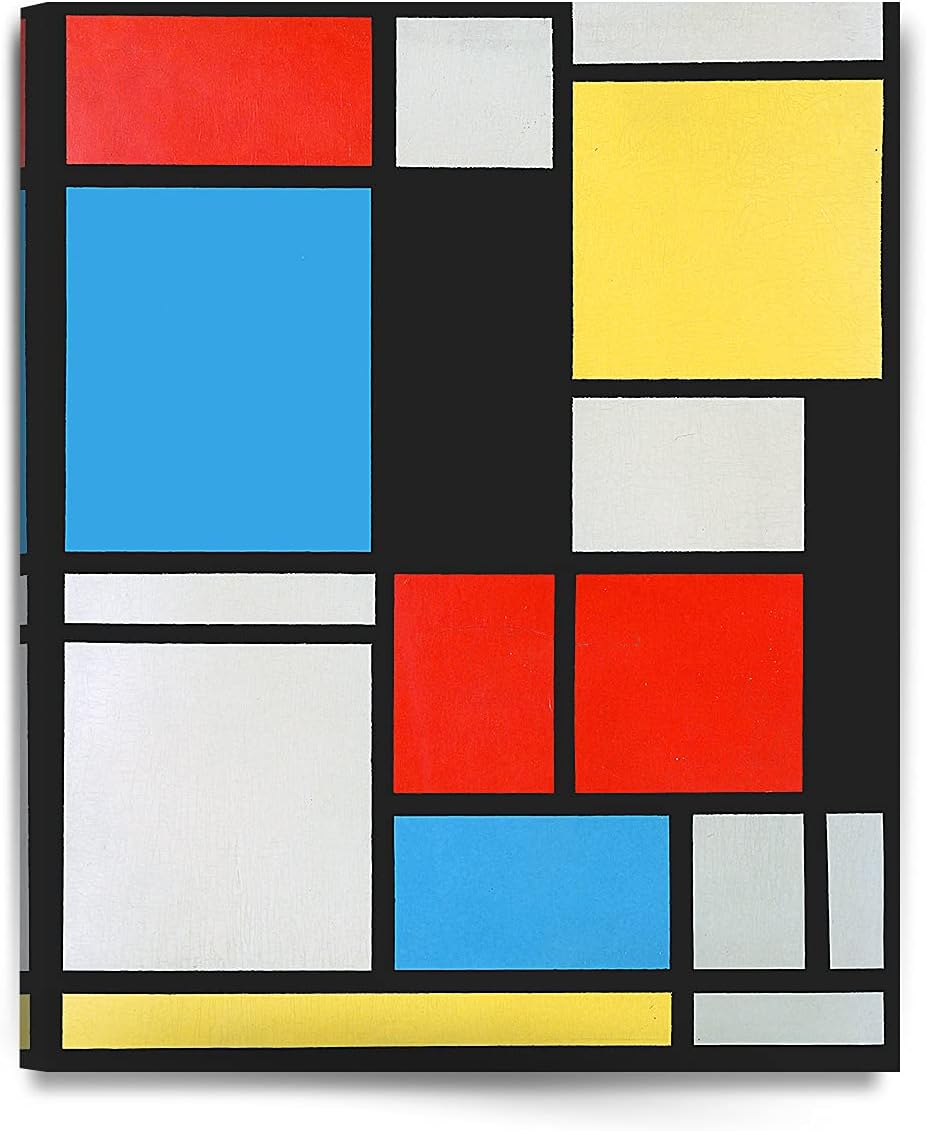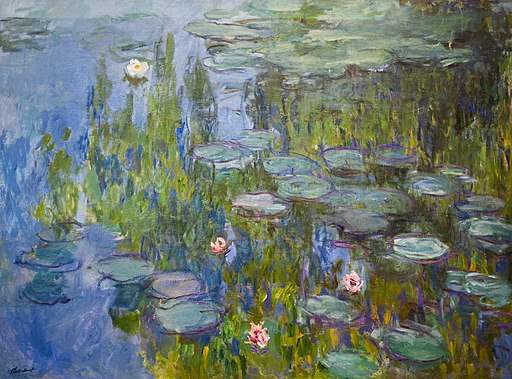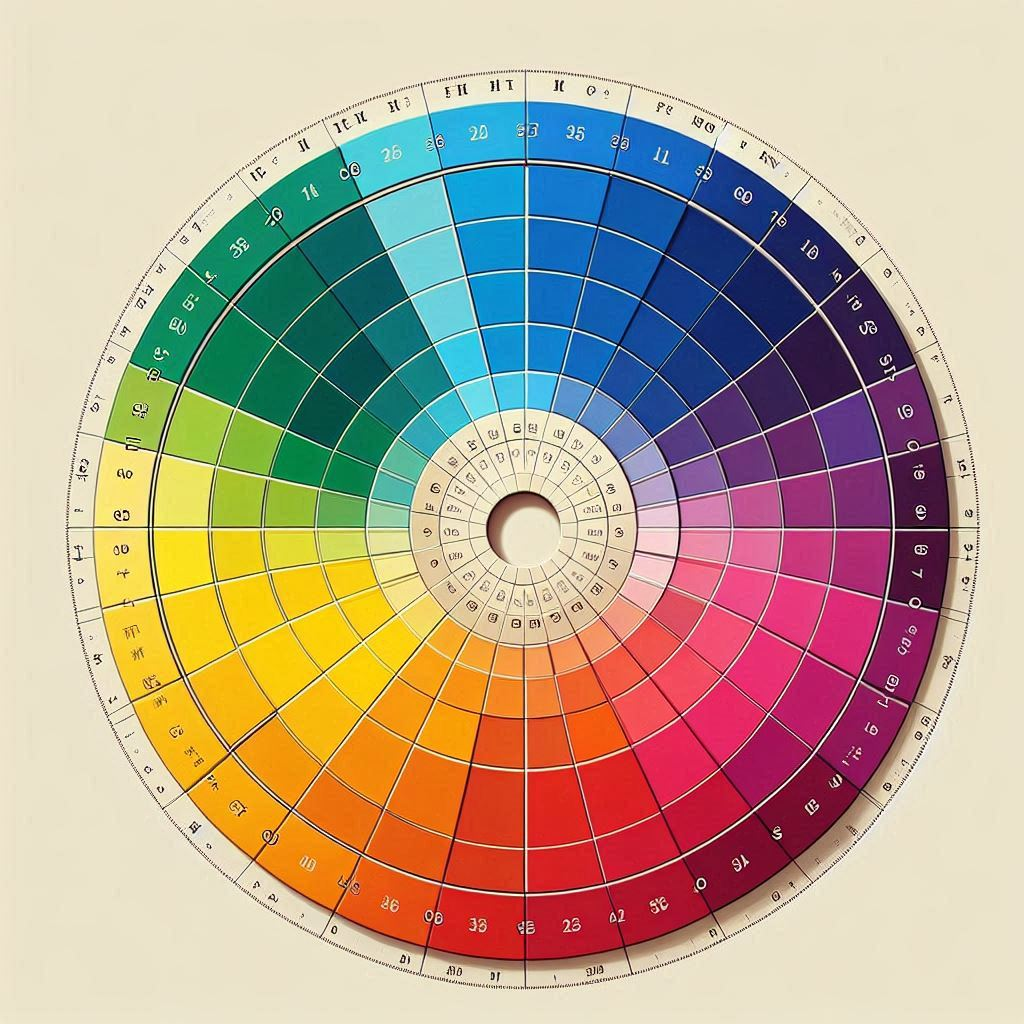Have you ever wondered what makes a painting truly captivating? It’s not just about slapping some colors on a canvas – there’s a whole world of artistic magic behind it! Let’s dive into the fascinating elements of composition and uncover the secrets that can transform your art from “meh” to “wow!”.
Key Points:
- Balance in Composition – Explain symmetric vs. asymmetric balance and how each creates different visual effects in paintings
- The Rule of Thirds – Describe this fundamental principle and how it helps create more dynamic compositions than centering subjects
- Leading Lines – Discuss how directional elements guide the viewer’s eye through the painting
- Focal Points – Explain techniques for creating and emphasizing the main subject (contrast, isolation, convergence)
- Negative Space – Highlight the importance of the areas around subjects and how they contribute to composition
- Rhythm and Pattern – Describe how repetition creates visual movement and harmony
- Scale and Proportion – Discuss how relative sizes of elements affect visual impact and storytelling
- Color Theory in Composition – Explain how color choices influence focal points and visual flow
Listen to our Podcast on Elements of Composition
The Art of Visual Storytelling
Imagine you’re holding a paintbrush, ready to bring your vision to life. But wait! Before you start, there’s something crucial you need to know – composition. It’s like the invisible backbone of your painting, the secret sauce that makes everything come together beautifully.
Composition isn’t just about making things look pretty. It’s about telling a story, evoking emotions, and guiding the viewer’s eye exactly where you want it to go. It’s the difference between a painting that people glance at and one that stops them in their tracks.
The Building Blocks of Brilliance
So, what makes up this magical thing called composition? Let’s break it down:
1. Lines: The Silent Storytellers

Lines are like the unsung heroes of painting. They might seem simple, but boy, do they pack a punch! Vertical lines can make your painting feel strong and stable, while horizontal ones bring a sense of calm. And those diagonal lines? They’re the rebels, adding excitement and movement to your art.
Think about the great Piet Mondrian. His paintings are all about lines, and they’re anything but boring!
2. Shapes: The Puzzle Pieces of Your Masterpiece
Shapes are the next piece of the puzzle. You’ve got your geometric shapes – circles, squares, triangles – and then there are organic shapes, the free-spirited cousins that mimic nature.

Playing with shapes can totally change the vibe of your painting. Want to create a sense of grandeur in a landscape? Throw in some triangular mountains! Looking for softness and harmony? Circular shapes are your best friends.
Georgia O’Keeffe was a master of shapes. Her flower paintings turned simple blooms into bold, abstract forms that command attention.
3. Color: The Emotional Powerhouse
Now we’re getting to the juicy stuff – color! This is where you can really let your emotions run wild. Colors have the power to make people feel things without even realizing it.

Ever heard of the color wheel? It’s like a cheat sheet for creating harmony or contrast in your paintings. Use colors that are next to each other for a calm feel, or colors that are opposite for some serious drama.
Just look at Van Gogh’s “The Starry Night.” Those swirling blues and yellows? They’re not just pretty – they’re an emotional rollercoaster on canvas!
4. Value: The 3D Magic Trick

Value is all about light and dark, and it’s your secret weapon for making flat paintings pop off the canvas. It’s what gives your subjects form and makes them look three-dimensional.
Want to draw attention to something? Crank up the contrast! Areas where light and dark meet are like magnets for the eye.
Rembrandt was the king of value. His portraits seem to glow from within, all thanks to his masterful use of light and shadow.
Taking It to the Next Level
Once you’ve got the basics down, it’s time to level up with some advanced techniques:
5. Balance: The Art of Visual Harmony

Balance in painting is like balance in life – it just feels right. You can go for symmetry if you want a formal, stable look, or shake things up with asymmetrical balance for a more dynamic vibe.
Leonardo da Vinci’s “The Last Supper” is a masterclass in symmetrical balance. On the flip side, check out Edgar Degas for some seriously cool asymmetrical compositions.
6. Contrast: The Spice of Artistic Life

Contrast is where things get exciting. It’s all about opposites – light vs. dark, big vs. small, smooth vs. rough. It’s what makes your painting pop and keeps viewers engaged.
Want to create drama? Crank up the contrast! Looking for a more subtle mood? Tone it down. It’s like having a volume knob for visual impact.
Caravaggio was the master of dramatic contrast. His use of light and dark (chiaroscuro) creates paintings that practically leap off the canvas.
7. Rhythm and Movement: The Dance of the Eye
Think of rhythm in painting like rhythm in music. It’s about creating patterns and repetitions that lead the eye on a merry dance across the canvas.
Claude Monet’s water lily paintings are a perfect example. The repeated shapes and colors create a sense of gentle movement, like ripples on a pond.

8. Perspective: The Illusion of Depth
Perspective is your ticket to creating a 3D world on a 2D surface. It’s not just for realistic paintings either – even abstract art can benefit from a sense of depth.
The Renaissance masters like Raphael and Michelangelo were perspective wizards. Their paintings create entire worlds you feel like you could step right into.
9. Focal Point: The Star of the Show
Every painting needs a star, and that’s where your focal point comes in. It’s the thing that grabs attention and holds it.

Ever heard of the rule of thirds? It’s a nifty trick for placing your focal point. Imagine dividing your canvas into a 3×3 grid and putting your star at one of the intersections.
Johannes Vermeer’s “Girl with a Pearl Earring” is a perfect example. That earring? It’s not just a piece of jewelry – it’s a masterfully placed focal point that draws you in.
10. Negative Space: The Power of Nothing
Sometimes, what you don’t paint is just as important as what you do. Negative space – the empty areas around and between your subjects – can be a powerful tool for creating balance and emphasis.

Japanese printmakers like Hokusai were masters of negative space. Their minimalist compositions prove that sometimes, less really is more.
Bringing It All Together
Whew! That’s a lot to take in, right? But here’s the thing – mastering composition is a journey, not a destination. It’s about experimenting, breaking rules, and finding your own unique voice.
As you play with these elements in your own work, remember that there’s no one “right” way to compose a painting. Trust your instincts, study the masters, and most importantly, have fun with it!
Every great painting starts with a strong composition. So grab your brushes, let your creativity run wild, and who knows? Your next masterpiece might be just around the corner. The art world is waiting to see what you’ll create!
FAQs
What are the 7 elements of composition in painting?
The seven fundamental elements of composition in painting are: line, shape, form, space, color, texture, and value. Each element works together to create visual interest and guide the viewer’s experience through the artwork.
How do I improve my painting composition?
Improve your painting composition by: practicing thumbnail sketches before starting, studying master paintings, understanding the rule of thirds, creating clear focal points, using leading lines effectively, maintaining balanced value distribution, and getting feedback on your work regularly.
What is the golden ratio in painting composition?
The golden ratio (approximately 1:1.618) is a mathematical proportion found in nature that creates visually pleasing compositions. Artists use this ratio to position key elements, determine canvas dimensions, or divide the painting space to create harmony and balance that naturally appeals to viewers.
How do professional artists plan their compositions?
Professional artists typically plan compositions through preliminary sketches, value studies, compositional thumbnails, reference gathering, and sometimes digital mockups. Many artists spend significant time on this planning phase to solve compositional problems before beginning the final painting.
What makes a strong composition in art?
A strong composition features a clear focal point, balanced visual weight, effective use of negative space, purposeful directional flow, harmonious color relationships, varied textures and shapes, and appropriate scale relationships that support the painting’s intended message or emotion.
Additional Resources:
1. Composition in Art: Definition, Elements & Principles
This resource from Study.com provides a comprehensive overview of composition in art, detailing its importance and the various elements that contribute to effective composition. It discusses key concepts such as line, shape, color, and texture, as well as principles of design that help artists convey their intended messages. This resource is particularly useful for understanding how different elements interact to create a cohesive artwork.
2. The Elements of Composition in Art
Marion Boddy-Evans’ article outlines the elements of composition specifically in Western art, distinguishing them from the elements of art. It covers essential aspects such as balance, contrast, focus, and rhythm, providing insights into how these elements can be manipulated to enhance the viewer’s experience. The article also includes practical tips and a mnemonic to help remember the elements, making it a great tool for artists at any level.
3. Painting Composition Tips for Beginners
This resource from Artists Network offers practical tips for beginners to improve their painting compositions. It emphasizes the importance of planning and creating value sketches before starting a painting, ensuring that the composition is strong from the outset. The article discusses how to create dynamic compositions through the use of variety and balance, making it an excellent guide for artists looking to enhance their compositional skills.



